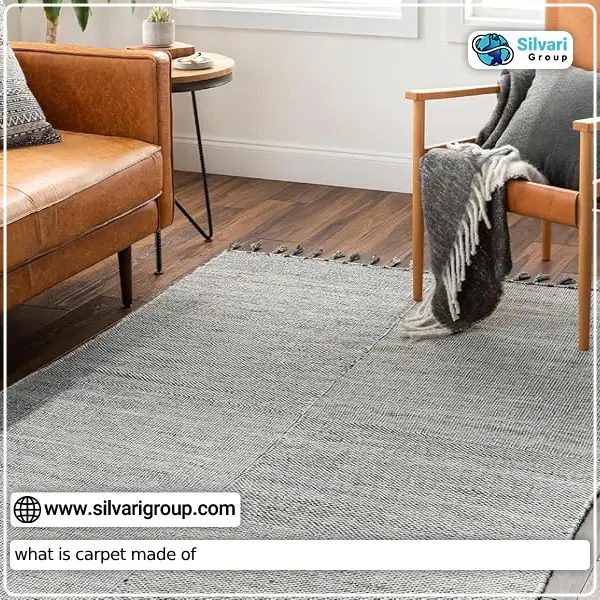Imagine walking into a living room, feeling the soft, plush texture of a well-crafted carpet beneath your feet. Have you ever wondered what things goes into creating such a luxurious and functional floor covering?
Understanding what carpets are made of can make all the difference when choosing the right one for your space.
In this article, we are going to examine the material of carpets, the benefits of using carpets, the characteristics of a quality carpet, the method of maintaining carpet fibers, and the types of carpet textures. This Article is to help who, want a comfortable, stylish, and long-lasting carpet without the confusion.
Click to use Silverigroup personal shopper services
What Are the Benefits of Carpet?
- One of the biggest benefits is the warmth and comfort it provided underfoot, especially during colder months.
- Carpet comes in various styles, patterns, and colors to match any interior design.
- Unlike hard surfaces like tile or wood, carpet feels soft and cozy, making it perfect for rooms where you want to relax, such as bedrooms and living areas.
- it acts as an insulator, helping to retain heat and even reduce energy costs. If want to spend less on heating bills in the chillier months, carpet is the perfect choice.
- Another unexpected benefit is as the noise reduction. the carpet helped to significantly reduce sound, especially between floors. This made our home feel quieter and more peaceful.
- Beyond comfort and quiet, carpets also improve indoor air quality by trapping dust, allergens, and other particles, which can then be easily removed with regular vacuuming.
- For families with allergies, has noticeable improvement in daily life.
- Carpets’ non-slip surface is ideal for safety purposes—especially if you’ve got kids, pets, or elderly family members.
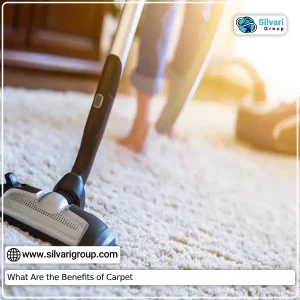
most common carpet material
nylon
nylon is by far the most common carpet material, and for good reason. nylon carpets are highly durable and resilient, which means they bounce back well from furniture imprints.
This makes them an excellent choice for busy areas of the home, like living rooms or hallways.
nylon carpets are also highly stain-resistant, especially when treated with stain protection technology. For family, with kids and pets, this was a huge benefit, as it makes cleaning up everyday spills much easier.
Polyester
Polyester is another popular option known for its softness, resilience, and moisture resistance.
It’s a more budget-friendly option compared to nylon, and it offers a softer, more luxurious feel underfoot. Polyester carpets are known for their vibrant colors and resistance to fading, which is great for maintaining a fresh, bright look over time.
However, polyester isn’t as durable as nylon, so it may not hold up as well in high-traffic areas. Despite that, for rooms where comfort and appearance matter more than durability, like bedrooms, polyester carpets could be a wonderful option.
Click to buy citric acid from Silvairgroup
Polypropylene
Polypropylene is a durable and budget-friendly option, often used in high-traffic areas like hallways and basements. It is resistant to stains, moisture, and fading.
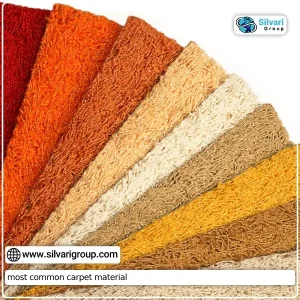
Natural fiber carpets
Natural fiber carpets offer a unique blend of comfort, durability, and eco-friendliness. These carpets are crafted from renewable resources, making them a sustainable choice for your home.
Made from materials like wool, sisal, jute, and seagrass, these carpets , making them a more sustainable choice for environmentally conscious homeowners.
Wool is naturally stain-resistant and hypoallergenic, that not only felt luxurious but was also easy to maintain.
Apart from wool, I also considered other natural fibers like sisal and jute, which have a more textured, rustic look.
Sisal, for instance, is incredibly durable and ideal for high-traffic areas like hallways or entryways.
While they don’t offer the same plush comfort as wool, sisal and jute carpets bring a unique aesthetic to a room, adding a natural, earthy vibe.
these natural fibers tend to be more absorbent, so they aren’t the best choice for areas prone to moisture or spills, like kitchens or bathrooms.
finally, the combination of sustainability, durability, and natural beauty made natural fiber carpets a serious contender.
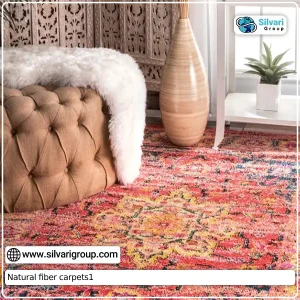
Features of high-quality carpet
the features of a high-quality carpet go far beyond just how it looks or feels. The phrase “high-quality carpet” is subjective and depends on the needs of the individual.
- Density : One of the most important things is that density is a key indicator of quality. When you look closely at the carpet, the more tightly packed the fibers are, the better it will wear over time. A denser carpet means less chance of the backing showing through, and it resists matting and crushing underfoot. it is crucial that would hold up in high-traffic areas without losing its plushness or becoming flat over time.
- twist level of fibers: Another feature is the twist level of the carpet fibers, especially with cut-pile carpets. A higher twist level means the fibers are more tightly twisted, which increases durability and helps the carpet maintain its appearance longer. This makes high-quality carpets better able to resist fraying and unraveling.
- stain resistance: Additionally, high-quality carpets often come with advanced stain resistance treatments. Carpets made from materials like nylon or wool with stain protection were not only easier to clean but also helped keep the carpet looking fresh and new for longer.
- Softness: Softness is another important aspect, as it contributes to comfort and warmth.Colorfastness ensures that the carpet’s color won’t fade over time, even with exposure to sunlight.
Click to buy antique products from Silverigroup
Finally, the backing and padding beneath the carpet also contribute to its overall quality. A good carpet will have a strong, durable backing and padding that adds comfort underfoot and helps with insulation and noise reduction.
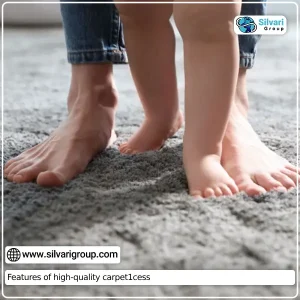
Types of carpet texture
The texture of a carpet can significantly impact its appearance, feel, and durability. Here are some common carpet textures:
Plush is a luxurious and soft texture, characterized by a dense, long pile. Plush carpets are often used in bedrooms and living rooms for their comfort and warmth.
Loop is a durable and versatile texture, featuring loops of yarn. Loop carpets can be either cut or uncut, with cut loop offering a smoother surface and uncut loop providing a more textured look.
Textured is a diverse category that includes various patterns and designs, such as Berber, frieze, and twist. Textured carpets offer a unique visual appeal and can be more durable than plush or loop styles.
Shag is a bold and trendy texture characterized by long, unkempt fibers. Shag carpets are known for their luxurious appearance and softness.
The choice of carpet texture depends on your personal preference, lifestyle, and desired aesthetic. Consider factors such as comfort, durability, and maintenance when selecting the right texture for your home.

How to Care for Each Carpet Fiber Type
Proper care is essential to prolong the life of your carpet. This depends heavily on the type of carpet fiber you choose. Here are some tips tailored to different fiber types:
- Wool carpets should be vacuumed regularly to remove dirt and debris. Avoid using harsh chemicals or steam cleaners. For stains, blot them immediately with a clean, damp cloth.
- Cotton carpets are relatively easy to care for but should be vacuumed regularly and protected from spills. For stains, use a mild detergent solution and blot gently. Sisal carpets are durable and require minimal maintenance. Vacuum regularly and avoid using harsh chemicals. For stains, use a mild detergent solution and blot gently.
- Nylon carpets can be vacuumed regularly. For stains, use a carpet cleaner specifically formulated for nylon.
- Polyester carpets can be vacuumed regularly. For stains, use a mild detergent solution. Polypropylene carpets are durable and require minimal maintenance. Vacuum regularly and avoid using harsh chemicals. For stains, use a mild detergent solution.
lick to buy industrial products from Silverigroup
By following these care guidelines, you can help your carpet maintain its appearance and longevity.

Conclusion
In this article, we examined the material of carpets, the benefits of using carpets, the characteristics of a quality carpet, the method of maintaining carpet fibers, and the types of carpet textures.
Whether you’re looking for durability in high-traffic areas or a soft, luxurious feel in bedrooms, understanding what carpets are made of allows you to make an informed decision.
By considering factors such as fiber type, texture, and maintenance, you can invest in a carpet that will enhance your home’s beauty, comfort, and value for years to come.

